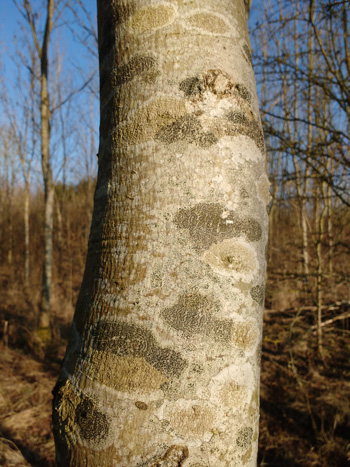
Mysterious patterns on ash bark
Spending a great deal of time in woodland as I do, means I have regular opportunities to observe minutiae. It feels important to be able to take pleasure in apparently small and maybe inconsequential things.
I took this picture a while ago. It’s the trunk of a thirty year old ash tree (Fraxinus excelsior). Some ash trees show this rather beautiful pattern on the bark. Other don’t. It’s rather like a disruptive camouflage. The contrasting, drab colours – greys, khaki, maybe oatmeal (or is that something that occurs naturally only in paint catalogues?) are subtle and understated.
I’ve made a brief attempt to find out what these patches are and if they serve any function for the tree; but without success. Are they lichens? Are they produced by the tree itself? If so, do they serve any function? Why do some trees show the pattern while other don’t? I can’t think of a natural pattern or display of colour that is there just to be pleasing to a human eye, so what’s going on?
Any ideas?

An answer 2 1/2 years later!
Yes, lichens. I’m a wood turner and come across these patterns a lot. I think the patterns are created by the different lichens competing for space. Take a macro photo and you can sometimes see the fruiting bodies of the lichens – like tiny mushrooms or puffballs. My conjecture is that lichens are quite specific to different textures which is why you only see these patterns on smooth ash bark (not on older trees / branches with rough bark
I have noticed the ‘camouflaging’ effect but we have a cluster of ash trees planted thirty years ago which are showing something that can be described as ‘marbling’. Approximately one inch diameter patches of different colours including light brown, very attractive but unfortunately now suffering from die-back. These ash trees are distinct in their colours from ash trees planted elsewhere in the same woodland to the extent I think they might be a different variety but I have not found a comparison of ash tree variety showing bark colourations.